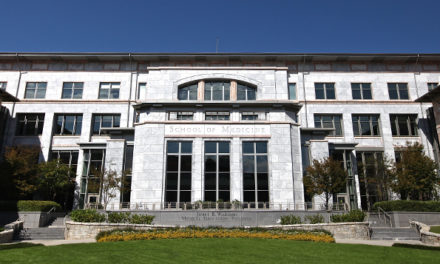Emory defended its ranking of 16th-highest endowment market value among the 831 schools surveyed in a study recently released by the National Association of College and University Business Officers (NACUBO).
The NACUBO-Commonfund Study of Endowments (NCSE), released Feb. 1, has been conducted every year since 1974, Ken Redd, director of research and policy analysis at NACUBO, said.
The study is used as an educational tool for the general public and policymakers to show how well schools have allocated their endowments, said Redd.
For more than 20 years, Emory remained in the top 17 of the NCSE, peaking at fifth in 1998 behind the consistently first Harvard University, as well as University of Texas System in second place, Yale in third and Princeton in fourth.
According to NACUBO, a membership organization and lobbying effort representing over 2,500 colleges, universities and higher education service providers, Emory’s rate of return on investments, 1.82 percent, exceeded the national average of negative 0.3 percent. The average rate of return for the 71 schools receiving over $1 billion in endowments was 0.8 percent.
Emory Investments Managing Director and COO Melanie Pickett said more up-to-date figures are even higher. While the NCSE compiled data until June 30, 2012, Emory’s fiscal year ended on Aug. 31, with a rate of return of 7.5 percent, above the Emory Investment Management portfolio benchmark return of 4.9 percent.
“For the calendar year ending Dec. 31,” Pickett added, “our final results showed a rate of return of 13.8 percent above a portfolio benchmark return of 10.8 percent.”
Emory’s endowment increased from $5.40 to $5.46 billion in 2012, largely a result of Campaign Emory, a seven-year philanthropy effort in which nearly 150,000 donors invested, according to the University website.
The capital campaign, according to Pickett, “has benefitted and will continue to benefit the University in ways beyond market value of endowment, given that not all donors choose to create endowments with their gifts.”
To some students angered by recent cuts to the visual arts department, journalism program, department of physical education, division of educational studies and economics and Spanish graduate programs, the results of the NCSE come as quite a surprise.
Freshman Haley Elise Carley transferred to Ohio State this semester after the program cuts prevented her from majoring in journalism at Emory.
“I think Emory should have reconsidered the cuts, because they really screwed a lot of people over,” said Carley. “If they were good at managing their investments, then they would have been able to figure their money issues out without cutting all of the programs.”
Still, according to Emory College of Arts and Sciences Dean Robin Forman, the mere eight percent of the university’s endowment used for the college is generally restricted to specific uses, such as financial aid and scholarships, rather than the general college.
“It is true that the return on our investments, along with the funds raised in the last campaign, means that more endowed funds are available for this purpose,” said Forman in reference to the closed departments and programs, “but it is also true that our overall financial aid commitment has grown at a much faster rate. Even with the growth in endowment, a much larger allocation of funds for financial aid is required from our operating budget.”
Despite Emory’s above average standing, however, the NCSE reports a sharp drop in average endowment return in 2012 for institutions across the board. In fiscal 2011, for example, the average return for colleges and universities surveyed was nearly 20 points higher than the current -0.3 percent. The average over the past 10 years was just over six percent.
“Market returns are influenced by several factors,” said Pickett. “The economic environment, the amount of risk the university wishes to take on its investment portfolio … and the skill of the investment team in managing assets – we carefully balance all of these factors when determining our target asset allocation..”
– By Lydia O’Neal
The Emory Wheel was founded in 1919 and is currently the only independent, student-run newspaper of Emory University. The Wheel publishes weekly on Wednesdays during the academic year, except during University holidays and scheduled publication intermissions.
The Wheel is financially and editorially independent from the University. All of its content is generated by the Wheel’s more than 100 student staff members and contributing writers, and its printing costs are covered by profits from self-generated advertising sales.





Financial aid is bleeding the university’s budget. Emory gave financial aid to Sam Eshagoff to transfer from UMich even though he was from the north shore of Long Island.
http://www.nytimes.com/2011/12/02/education/on-long-island-sat-cheating-was-hardly-a-secret.html?pagewanted=all&_r=0
Mr. Eshaghoff spent freshman year at the University of Michigan, but transferred – for financial reasons, he said in an interview on Tuesday. “It was an expensive school,” he said. “Emory was better with financial aid.”